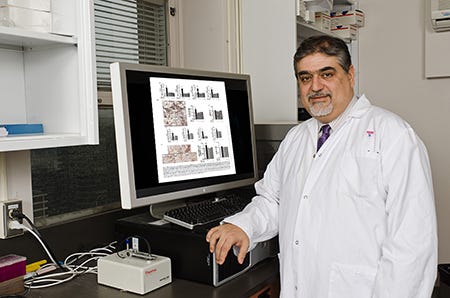Safety Concerns Raised for Common Plasticizer Used in Medical Devices
June 19, 2015
New research raises health and safety concerns over DINCH, a commonly used plasticizer found in products such as medical devices and food packaging.
Kristopher Sturgis
|
Vassilios Papadopoulos, PhD, was the study's lead author. |
DINCH (1,2-Cyclohexane dicarboxylic acid diisononyl ester), a commonly used plasticizer that has been promoted as a safe alternative to phthalate plasticizers, might not be as safe as initially thought. A recent study out of McGill University found that DINCH exerts biological effects on metabolic processes in mammals--effects that have previously gone unnoticed.
In addition to being used in medical devices, DINCH has also been used in the manufacturing of toys, food packaging, sports equipment, and even wall covering and flooring. Plasticizers remain under the microscope as many researchers continue to explore alternatives to phthalate-based plasticizers, as they have demonstrated dangerous effects on reproductive health. These health concerns have led to a complete reexamination of commonly used plasticizers, as alternatives are already being considered for products containing DEHP.
The research team at McGill, which has spent years exploring the impact of phthalate exposure on the endocrine system, actually stumbled upon their findings surrounding DINCH when they used it as a control in their studies on DEHP.
"Considering that DINCH has been reported to be a safe alternative to phthalates with an excellent toxicological profile, we decided to use it in our studies as a control," said the study's lead author Vassilios Papadopoulos, PhD and professor of medicine at McGill University (Montréal). "Our studies showed that MINCH, a major metabolite of DINCH, was able to promote differentiation in a primary culture model of rat preadipocytes."
In simpler terms, their study showed that DINCH's metabolite MINCH acts as a metabolic disruptor by disturbing how fat is made in the body. Their study also found that the effect of MINCH was mediated by a receptor involved in both the metabolic and endocrine systems, which allowed the team to infer that MINCH could interfere with the endocrine system in mammals, just as phthalate-based plasticizers do.
"It is common, when a new compound is developed and destined for commercial use, to asses its toxicological effects following specific criteria set up by regulatory agencies," Papadopoulos said. "There is no doubt that when examined in this context, DINCH passed the establish criteria, showing no toxicological effects, with the only exception being some effects on the thyroid. However, we are not aware of any studies where people examined the direct actions of metabolite MINCH on various tissues and cells in the body."
Papadopoulos noted that such was the case with phthalates in the past, where initial toxicological studies assessed them as safe, only to find later that when the cellular and molecular effects of their metabolites were investigated, potentially worrisome side effects were discovered. These side effects eventually triggered additional studies on the parent compounds, which led to the eventual reconsideration of phthalate-based plasticizers.
Papadopoulos was careful to note that their study was an in vitro study on cells isolated from the adipose tissue of the rat, and that these studies will have to be expanded in vivo and accompanied by detailed cellular and molecular studies to truly define the actions of DINCH and its metabolite MINCH. This study is simply cautioning that there are many unknowns that remain about DINCH and its metabolites, which call for a further detailed evaluation of their effects.
The group noted that considering the continuous exposure of humans to plastics throughout life, and the fact that there are periods of life when humans are more sensitive to exposures (such as early development), a more thorough evaluation on the effects of DINCH should be a priority.
"This is a widely used product," Papadopoulos said. "The public should know about its biological actions."
Learn more about medical device materials at MEDevice San Diego, September 1-2, 2015. |
Like what you're reading? Subscribe to our daily e-newsletter.
About the Author(s)
You May Also Like



